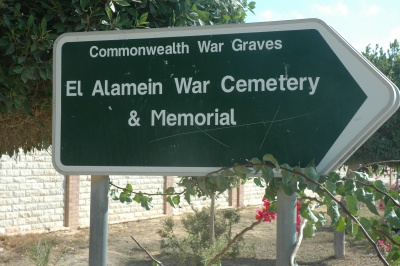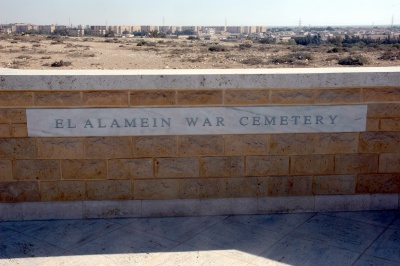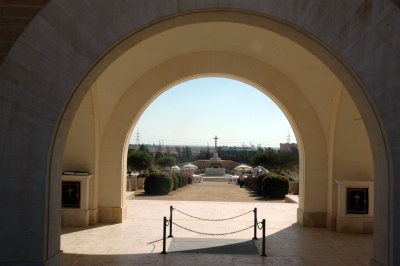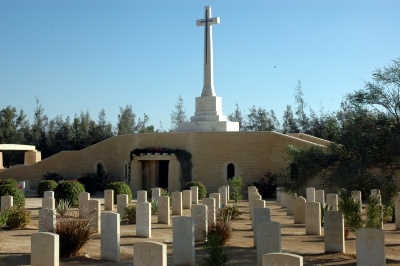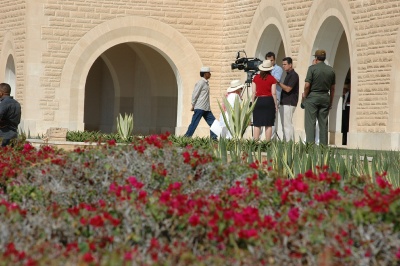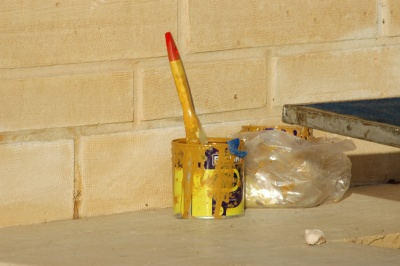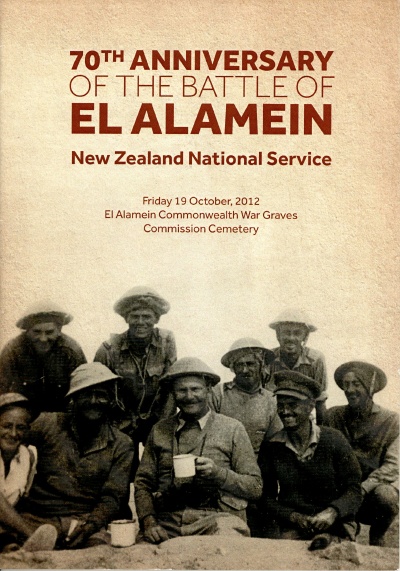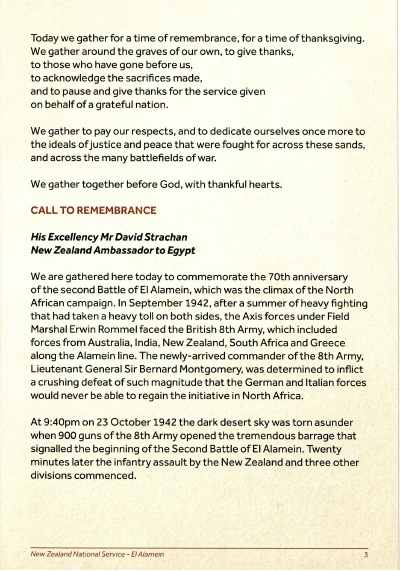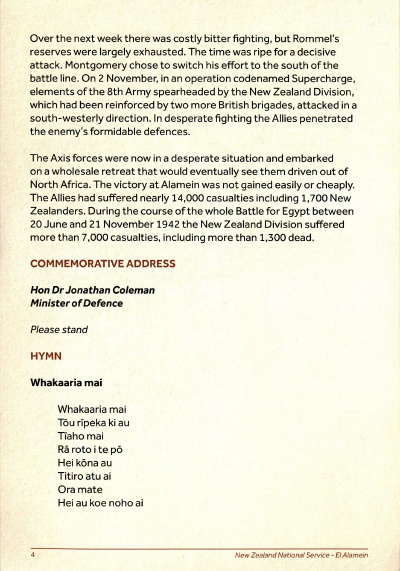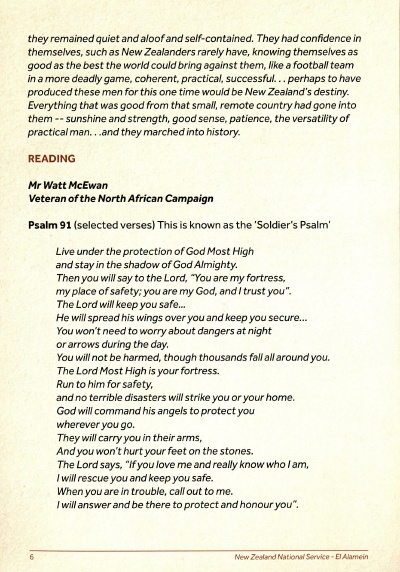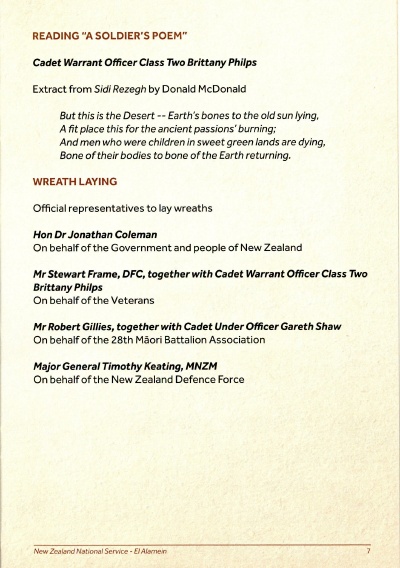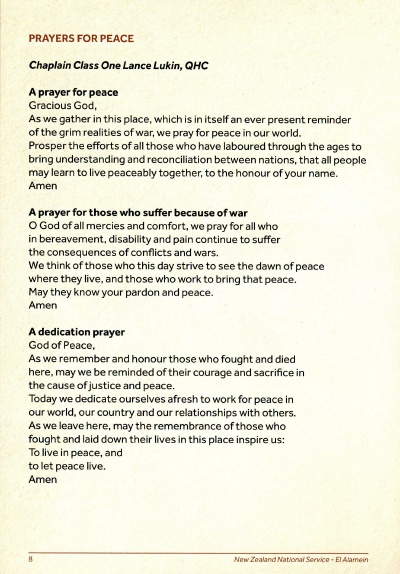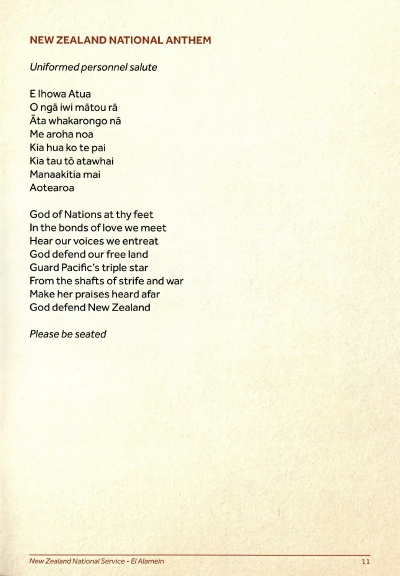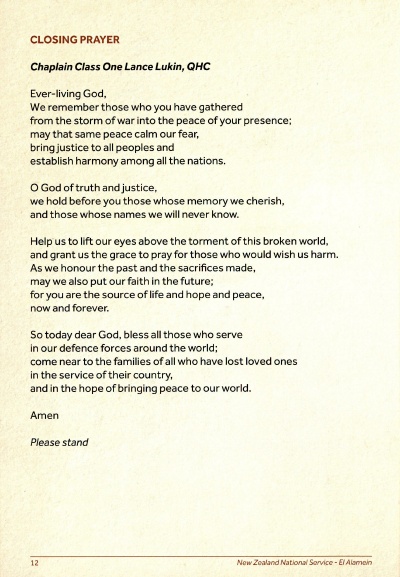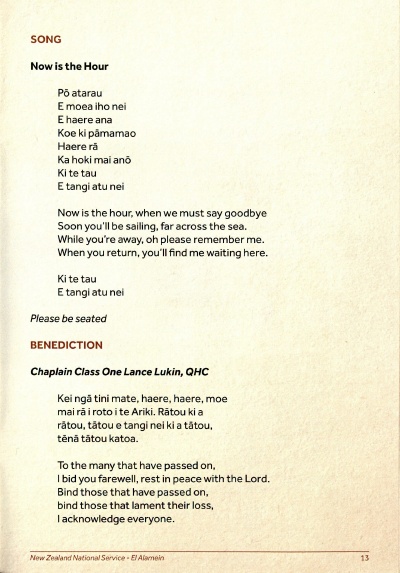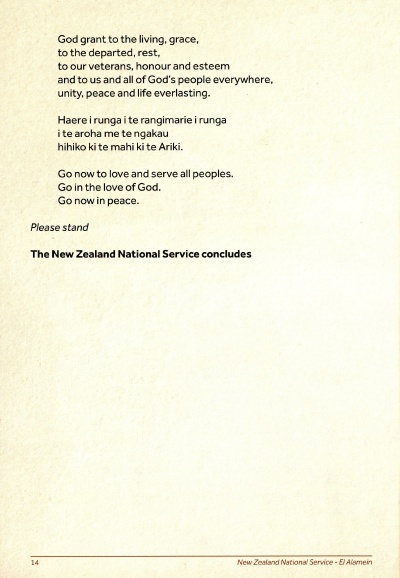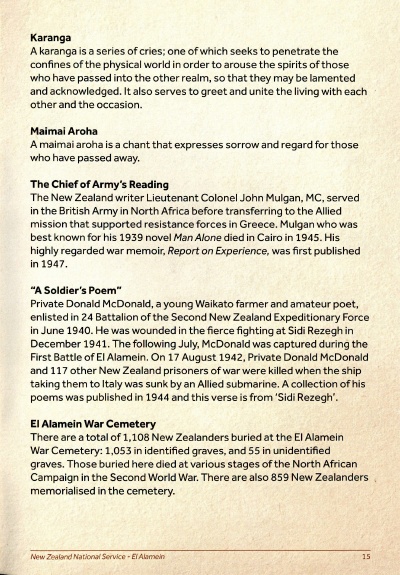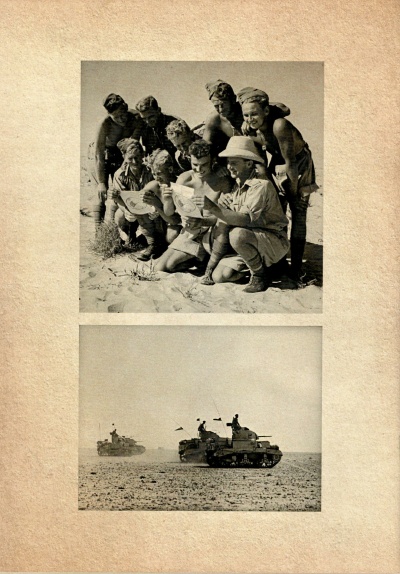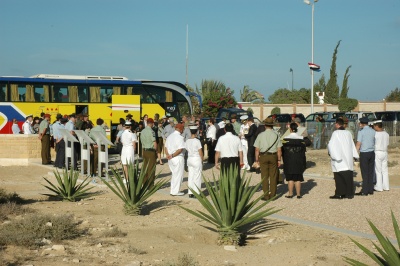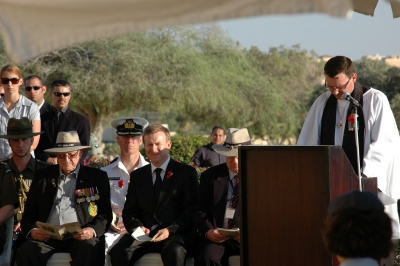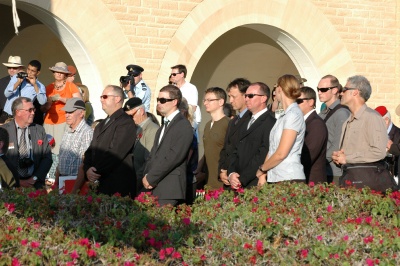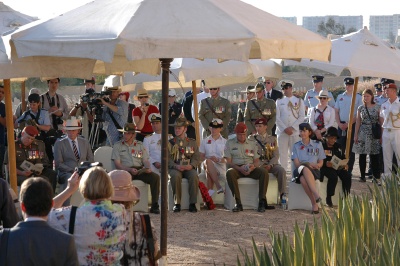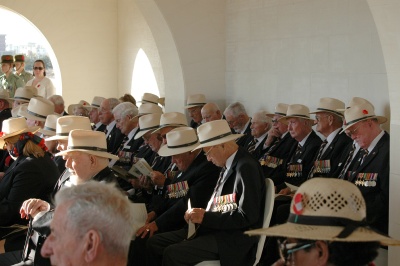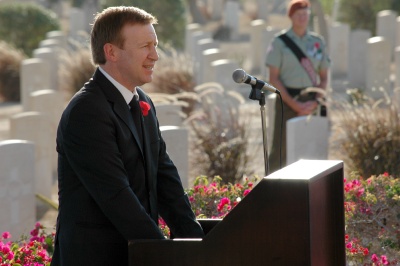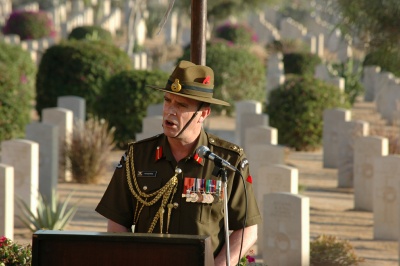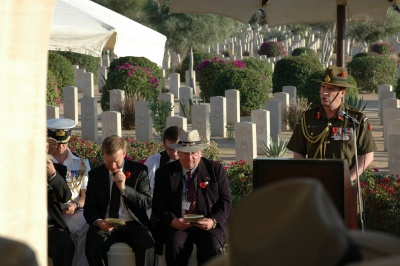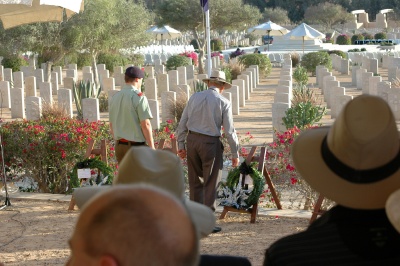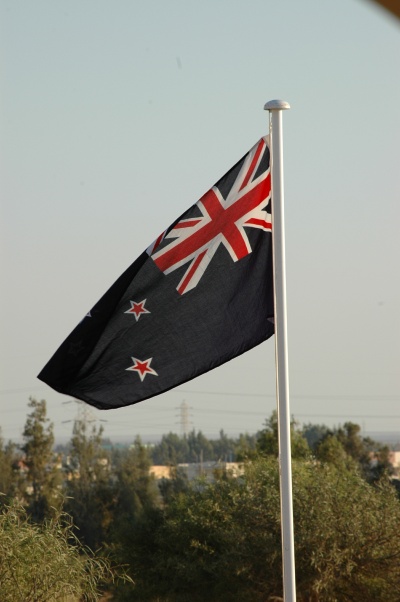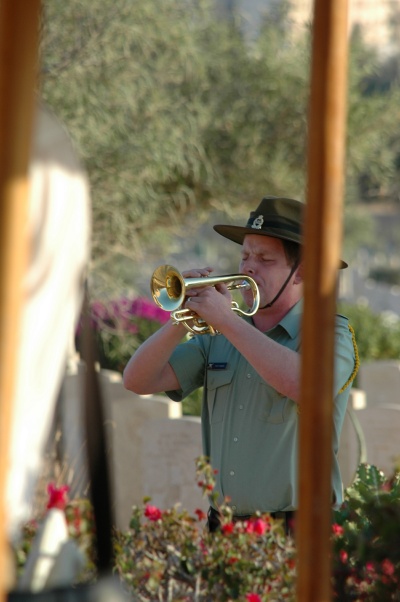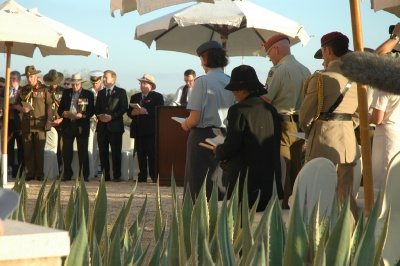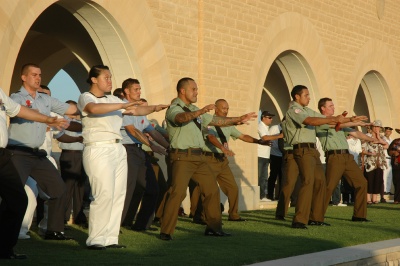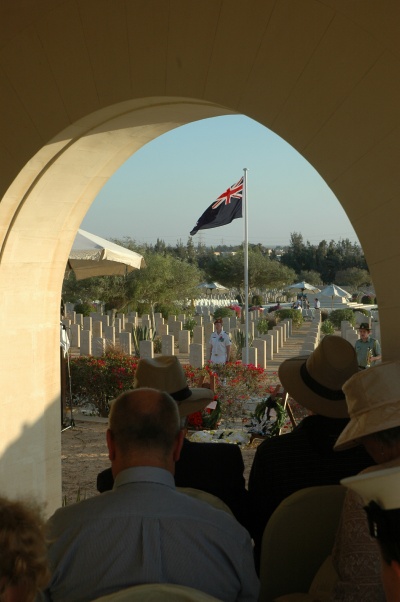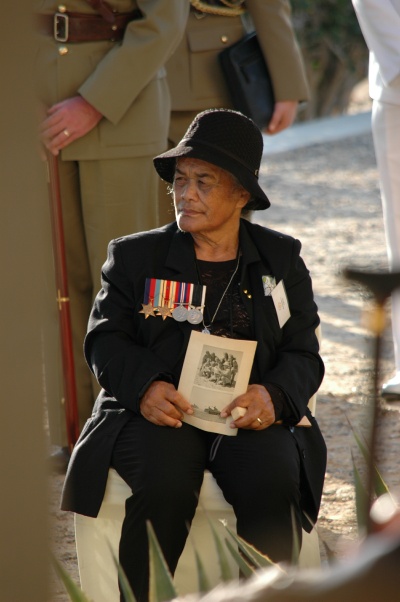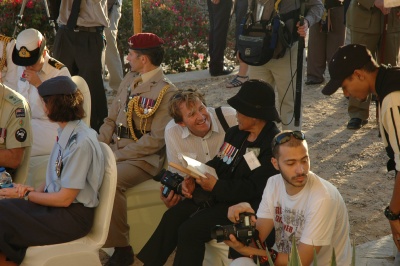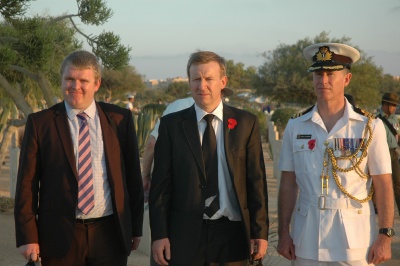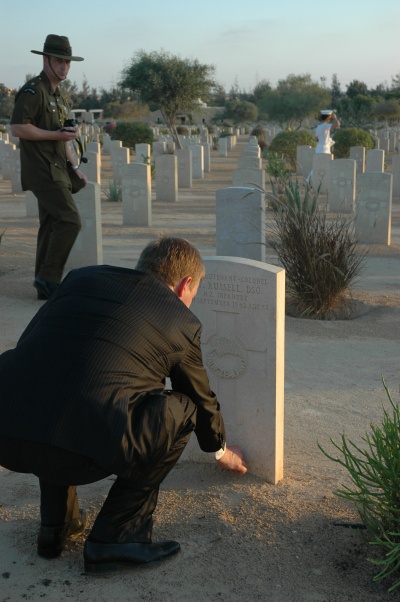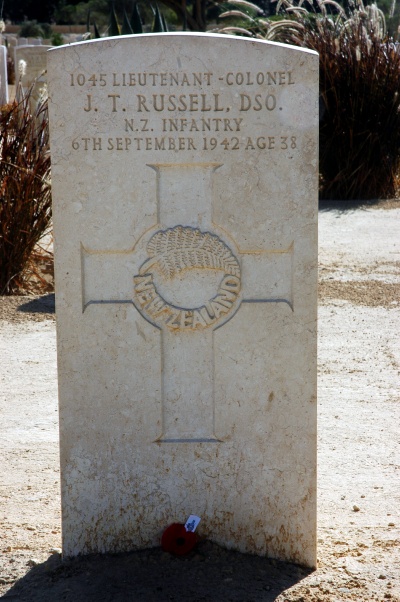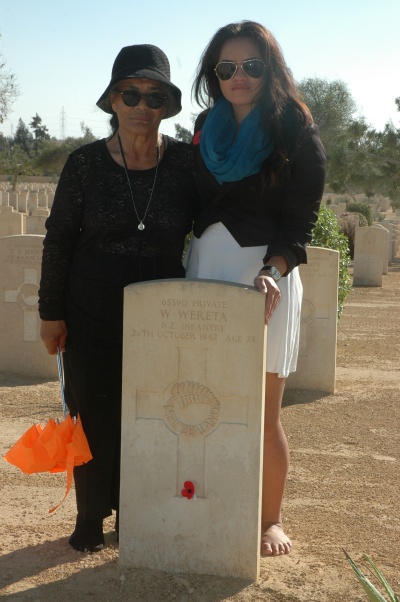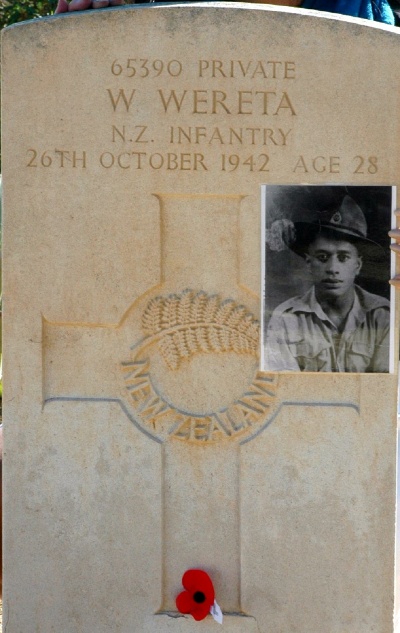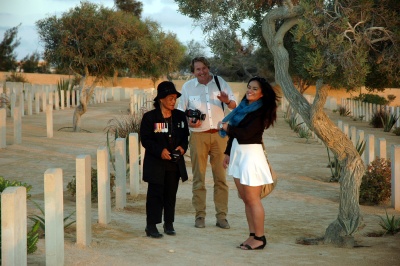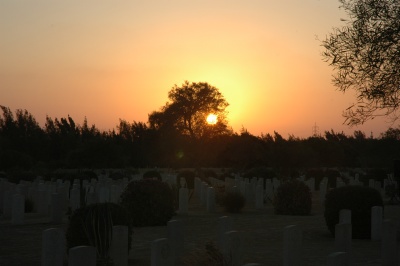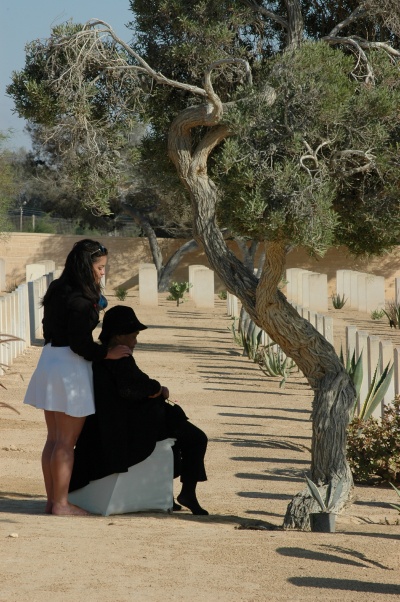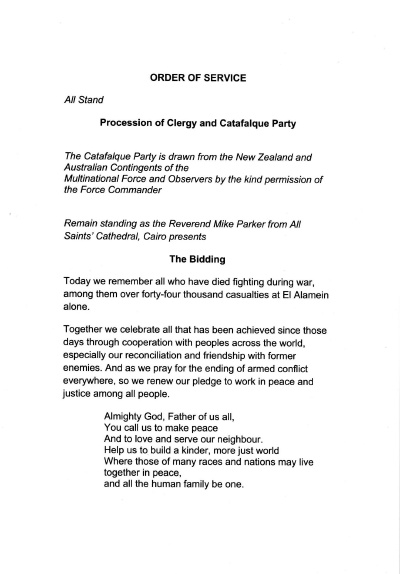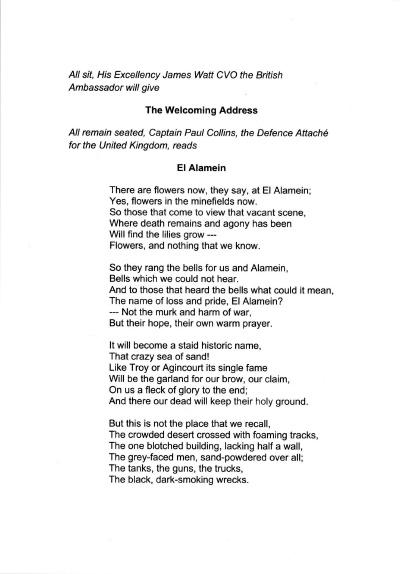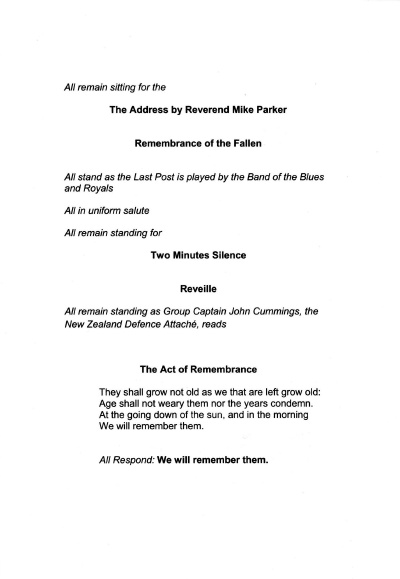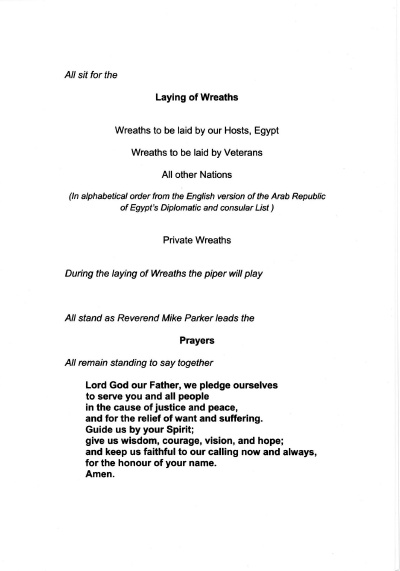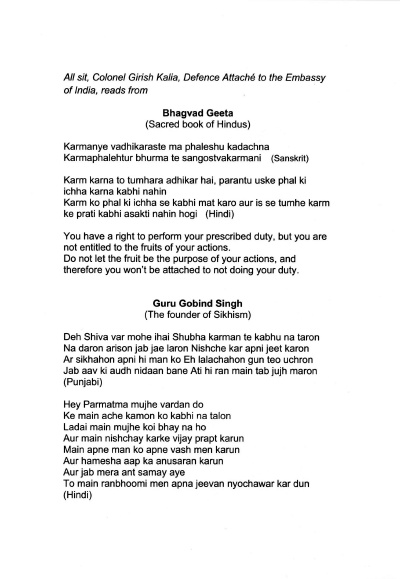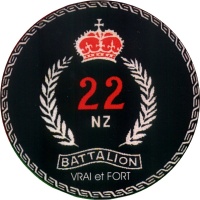
22nd Battalion 2NZEF
"Vrai et Fort"
70th Commemoration of the Battle of El Alamein: 19 October 2012
The New Zealand Division played a major role in the attack and breakout at El Alamein in October/November 1942, with 22 Battalion
part of the initial phase of this campaign. The New Zealand Division, as part of the 8th Army then chased Rommel all the way west to Tripoli. Part way through this drive to the west it was decided
that 22 Battalion would be withdrawn. The Battalion returned to Maadi Camp in Cairo and was refitted as a highly mobile, motorised battalion - 22 (Motorised) Battalion - with its own transport, armoured cars
and support. As a result the Battalion did not play any further part in the final phases of the battle in North Africa.
Nearly 2,000 New Zealanders are buried or commemorated at the Commonwealth Cemetery at El Alamein. It is the site of annual commemorations, but this year marked the 70th anniversary. The
New Zealand Government agreed to fund the return to El Alamein of all the veterans who were able to make the pilgrimage. Finally, 22 were able to attend the ceremony.
I attended the commemoration service in a private capacity, along with 15 other New Zealanders. I was able to honour the efforts of the 22nd Battalion and to photograph the
graves of the men buried there, and those commemorated on the wall of the memorial. There were two services, a small intimate one for New Zealand on the Friday
and a large international service on Saturday. My impressions of the services are recorded here.
The Commonwealth War Cemetery at El Alamein
The Commonwealth Cemetery at El Alamein is one of the largest worldwide, with over 20,000 casualties buried or recorded at the site. Of these, 1053 New Zealand men are
buried in the cemetery and a further 859 are recorded on the commemoration panels in the entranceway. This the largest cemetery containing New Zealanders outside of the country itsself.
The cemetery is approached from a carpark, down a sloping path towards the entrance containing the commemoration panels. The Cross of Scarifice and Memorial Stone can be seen in the distance.
When we arrived early in the afternoon there were signs of final cleaning and tidying in perparation for the services, including a hasty repainting of the safety lines on the steps
(the paint and brush had been left behind the steps...).
All Commonwealth war cemeteries that I have visited previously in France, Belgium, Italy, Britain and Egypt have been laid out with carefully manicured lawns with trees and flowers throughout graves.
El Alamein immediately struck me by the absence of grass. This is afterall part of the desert and water is scarce. There are flowers near the entranceway but beyond that the graves are planted with
succulents, olives trees and wattles. The trees are particularly welcome as a source of shade. A rare shower of rain the day before our arrival had left the pathways clear of footprints - it gave me the impression that I was the first to
visit some of these graves. And perhaps I was. I had 37 men from the 22 Battalion to locate, photograph and pay my respects to. These men
and my photographs of their headstones are recorded on another page.
|
The sign at El Alamein
|
Entrance to the El Alamein Cemetery
|
|
The path down to the main entrance arches
|
The Cross of Sacrifice viewed through the main entranceway
|
|
The Cross standing at the rear of the Cemetery.
|
Looking back towards the main entrance
|
|
A rare splash of colour in the desert sands
|
Signs of a hurried clean up of the site
|
The New Zealand 70th Commemoration Service
The New Zealand service was a small, intimate event, held close to the main entrance to take advantage of the seating and the shade offered by
the foyer. The service was timed for 4pm to gain some respite from the hot sun. The setting sun also cast a softened light and added a sense of
poignancy as it dropped below the trees and headstones.
The Order of Service for the New Zealand 70th Commemoration Service at El Alamein
Photographs of the Service
|
The official party with the veterans arrives at El Alamein
|
Start of the Service
|
|
The veterans resting in the shade of the entrance foyer
|
Some of the audience
|
|
The official party in the shade of umbrellas
|
More of the veterans in the shade
|
|
The Minister of Defence Hon Jonathan Coleman
|
Chief of Army Brig Tim Keating
|
|
Chief of Army
|
Mr Watt McEwan, veteran
|
|
Stewart Frame and WOII Britanny Philps laying the wreath on behalf of veterans
|
Robert Gillies and Cadet Gareth Shaw on behalf of the 28th Maori Battalion
|
|
The New Zealand flag
|
Pte Thomas Baker playing the Last Post
|
|
Singing "Now is the Hour"
|
Members of the Sinai Peacekeeping Force perform the haka
|
|
View over the cemetery from the entrance foyer
|
Topsy seated under the umbrellas. Her father is buried at El Alamein
|
|
The indefatigable Cameron Bennett talking with Topsy
|
Minister of Defence Hon. Coleman walking through the cemetery, accompanied by Josh Cameron and Cdr Mark Chadwick
|
|
The Minister laying a poppy on the grave of Lt Col John Russell, who he referred to in his speech
|
Lt Col John Russell, Commanding Officer of the 22nd Battalion
|
|
Topsy and grand-daughter Renee beside the grave of her father
|
Pte Wereta's headstone
|
|
Topsy and Renee with Cameron Bennett again
|
The sun sets over El Alamein
|
|
|
El Alamein Railway Station
Close to the Commonwealth Cemetery lies the Alamein Railway Station. This station was used by troop trains bringing men and supplies up from Alexandria to
reinforce the New Zealand Division at El Alamein. The old station is still there, dilapidated and unused. A new(er) station has been built nearby.
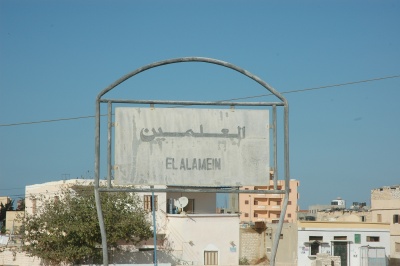
The sign at El Alamein Railway Station
|
|
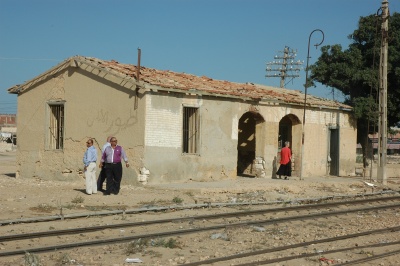
The old El Alamein Station
|
|
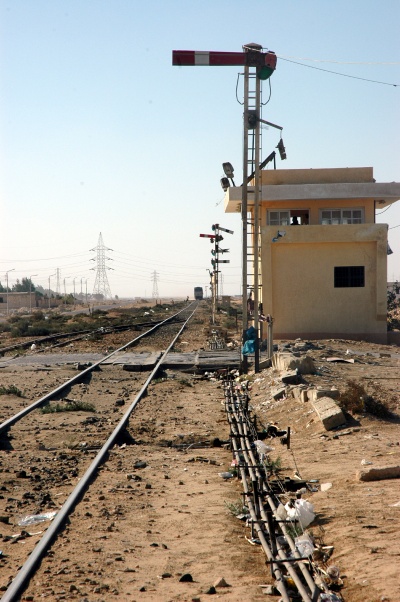
Looking west along the tracks
|
|
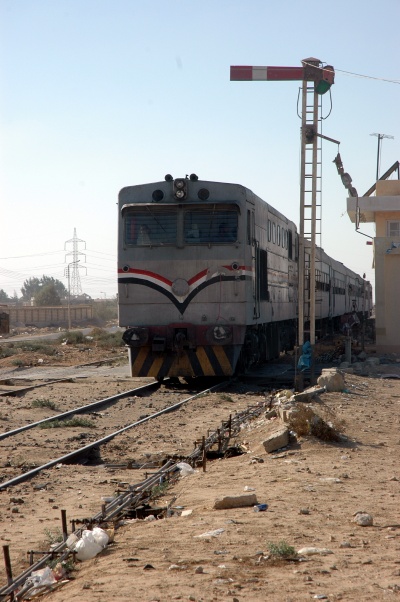
Yes, that is a train coming....
|
|
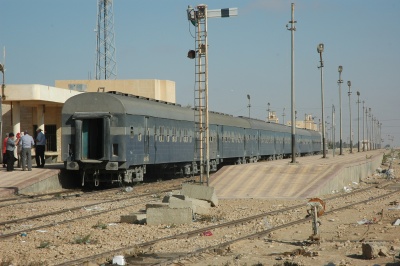
Pulling into the new station
|
|
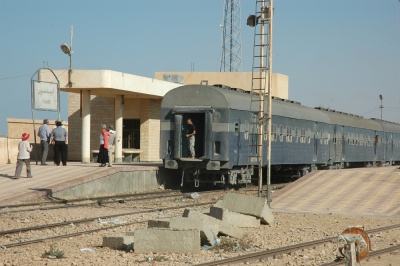
Departing with security riding at the back
|
|
The International Commemoration Service
The International Commemoration was held the next day, Saturday 20th October. This was a large event attended by several hundred people from a large number of
countries. Unlike the previous day, when we New Zealanders were the only people in the cemetery, today saw a large security presence. Armed police and other security people
and the ubiquitious metal detector at the gate. Not unreasonable in a region that has seen indiscriminate acts of violence in the recent past.
The International Order of Service
Photographs of the International Service
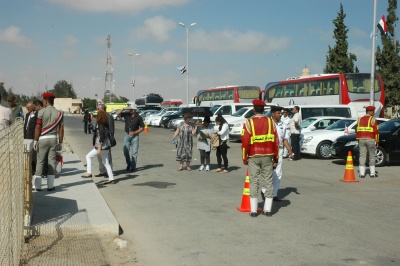
The international parties start to arrive
|
|
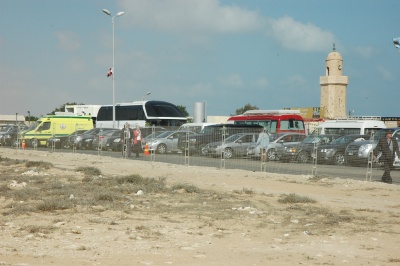
Buses, embassy cars galore and the odd ambulance
|
|
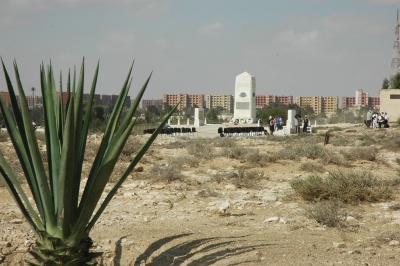
The Australian Memorial near the entrance to the Commonwealth cemetery
|
|
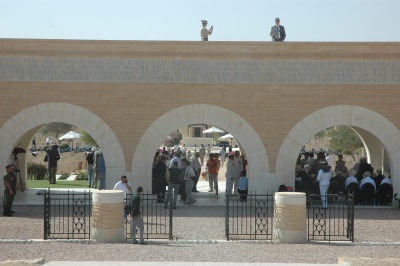
Crowds gathering in the entrance foyer
|
|
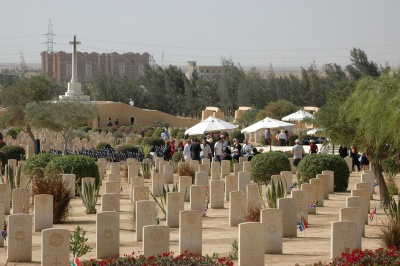
Looking across to umbrellas where the service will be held
|
|
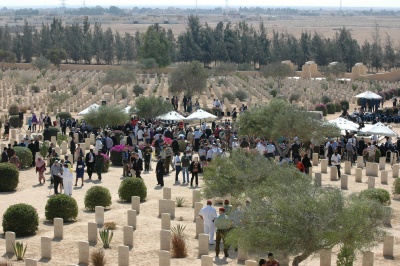
Crowds around the service
|
|

The Italians arrive with typical dash and self-importance....
|
|
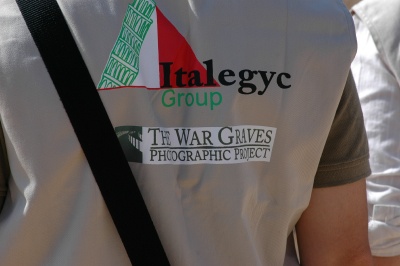
And a purpose in mind
|
|
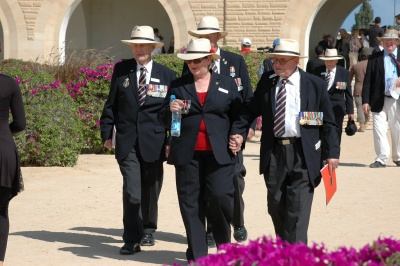
Australian veterans....
|
|
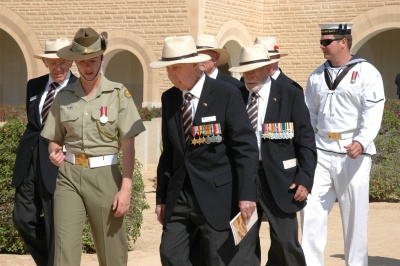
and more Australians....
|
|
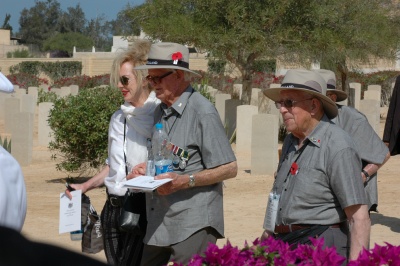
Kiwi veterans.....
|
|
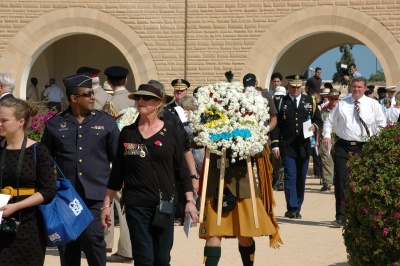
and a wreath in a kilt, than turned into the piper.
|
|
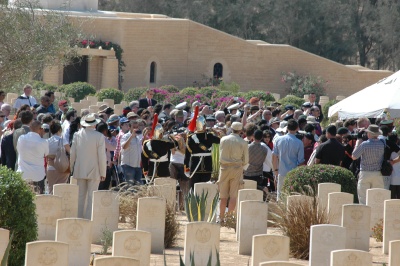
The trumpets playing the Last Post
|
|
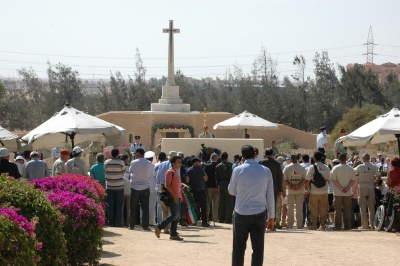
and wreaths being laid
|
|
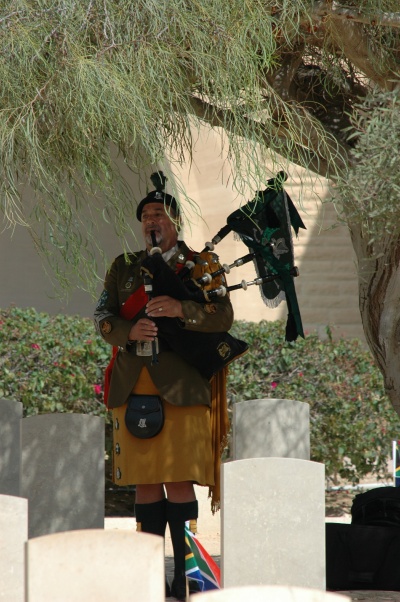
The walking wreath became the Piper - from the South African Irish Reginment no less
|
|
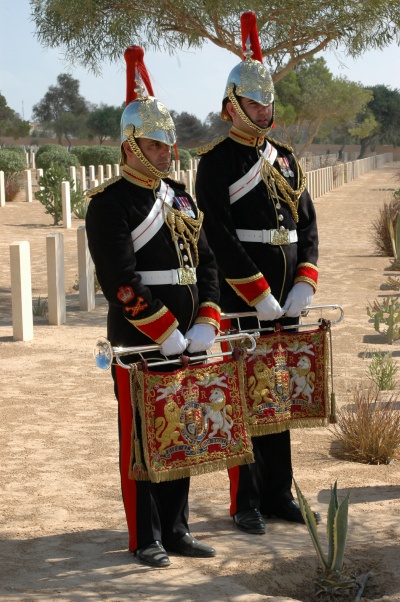
Trumpets at rest
|
|
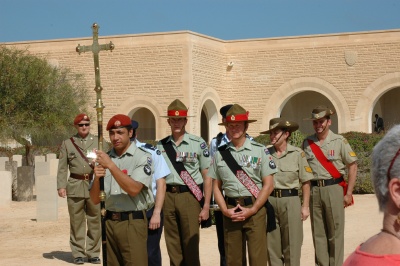
The catafalque party lining up, mostly Kiwi peacekeepers
|
|

And the Kiwi soldier who had to stand still for the whole service
|
|
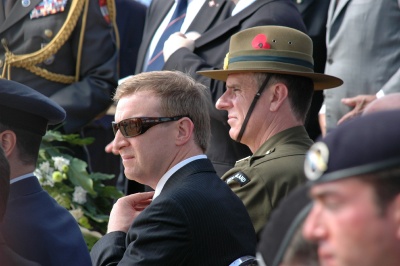
The Minister of Defence with the Chief of Army
|
|
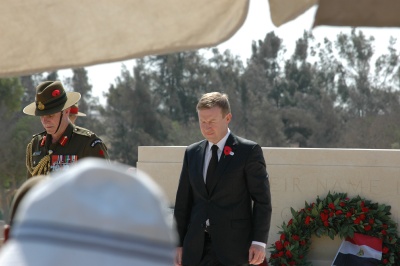
and laying the New Zealand wreath
|
|
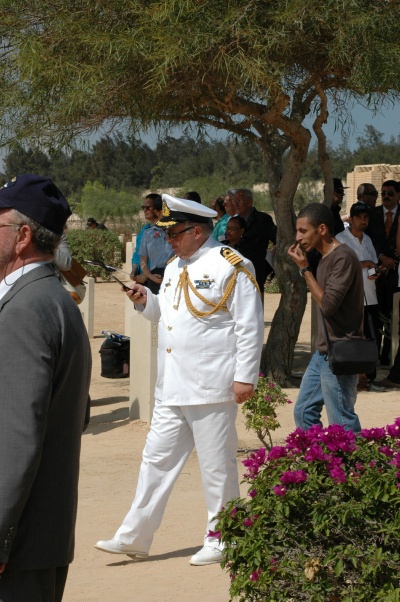
Not all people were focussed on the service
|
|

The Egyptian Navy was well controlled throughout.
|
|
The El Alamein War Museum
Close to the Cemetery lies the El Alamein War Museum, containing an outside grqveyard of military wrecks and relics. Inside are some excellent displays about the battles in the desert,
and a whole wing on the role played by the glorious Egyptian Army.
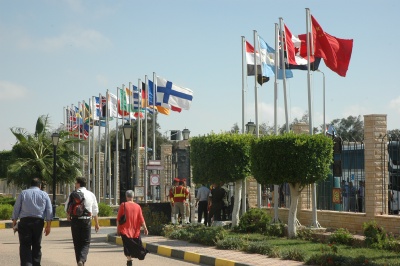
Entrance to the El Alamein War Museum
|
|
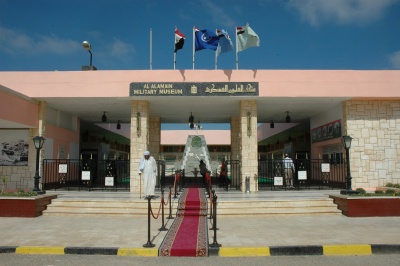
The War Museum
|
|

Mural on the war depicting the tank battles
|
|
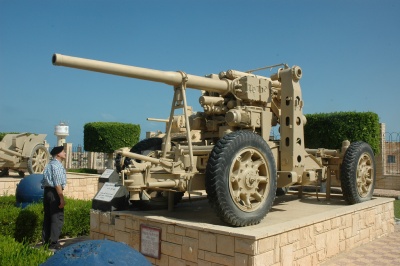
Italian 90mm anti-aircraft and anti-tank gun
|
|
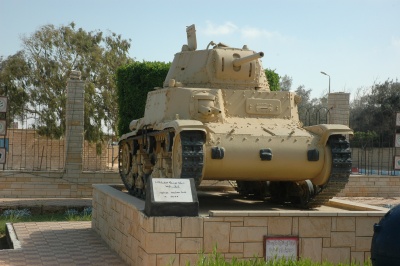
Italian M13 tank
|
|
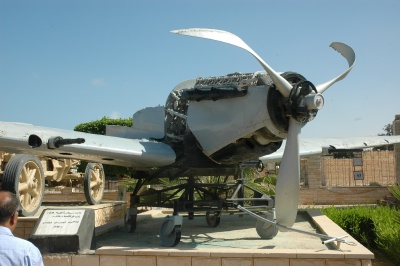
Remains of a British Spitfire
|
|
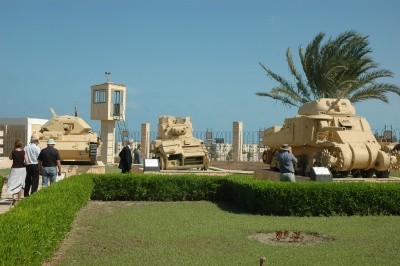
Crusader, Indian and Grant tanks
|
|
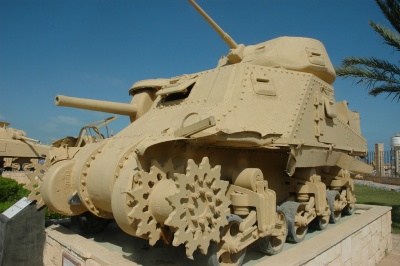
Grant tank
|
|
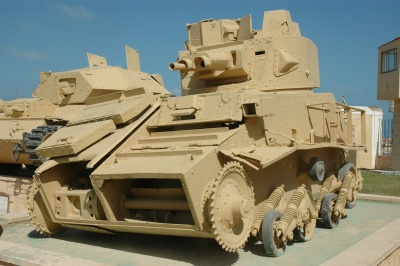
A "British Indian" tank
|
|
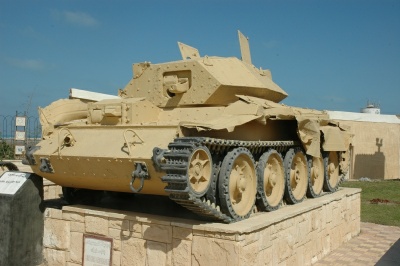
Crusader tank
|
|

Sherman tank
|
|
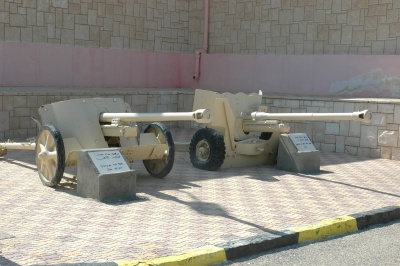
German 55mm (left) and British 6 pounder (right) anti-tank guns
|
|
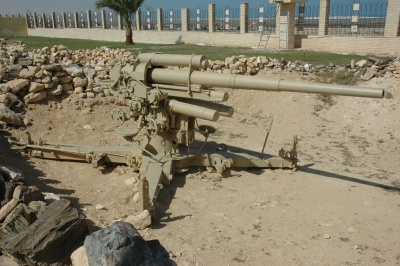
The much-feared German 88mm anti-tank gun
|
|
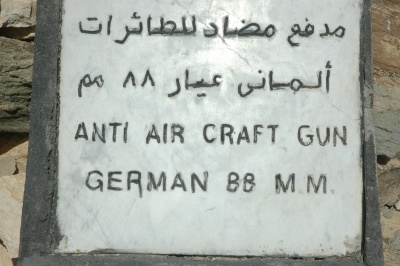
The typically-Egyptian sign beside the gun
|
|
The German and Italian Memorials
Several kilometres to the west lie the German and Italian war memorials. They are close to the coast and appear to be in positions close to the furtherest advance of these
forces. Both buildings are of striking design. The German one is a circular tower with an open courtyard. The Italian one has a high vaulted ceiling similar to a cathedral, a
memorial window facing the Mediterranian Sea (and Italy) and annexes of filled with ossiaries - the remains of many Italian soldiers, many simply "Incognato".
The German Memorial
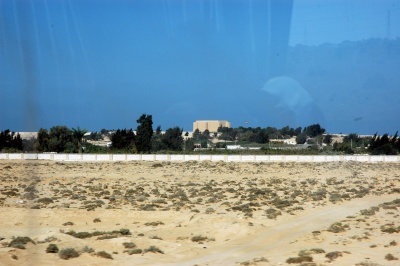
Approaching the German memorial in the bus
|
|
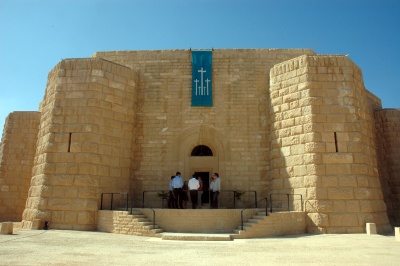
The entrance to the German memorial
|
|
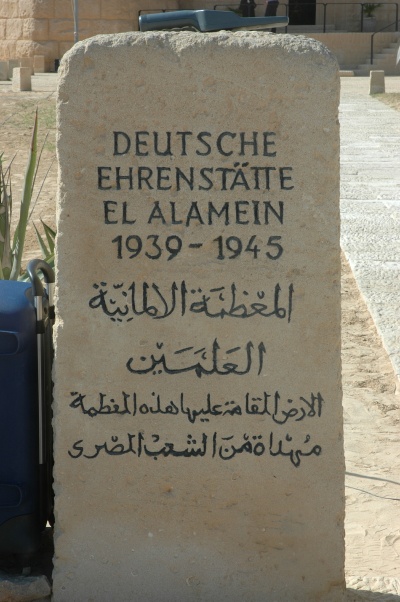
Memorial stone at the entrance
|
|
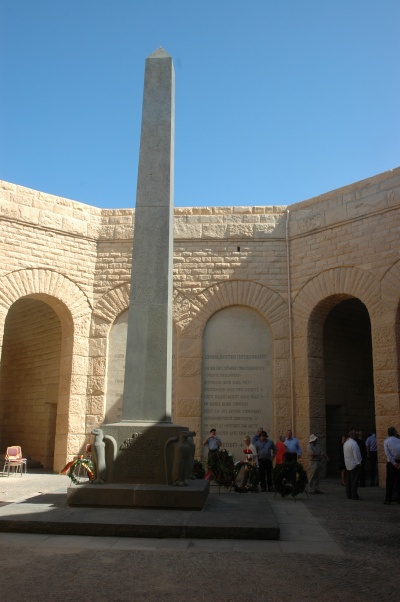
Inside, the obeloisk at the centre of the courtyard
|
|
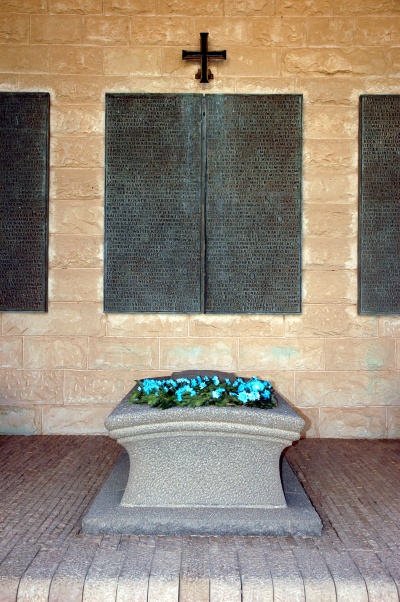
Each alcove around the courtyard has a symbolic grave and lists of the dead, by province
|
|
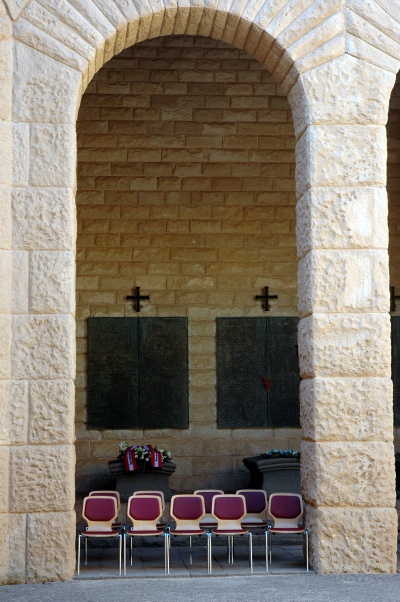
Chairs arranged for the ceremony
|
|
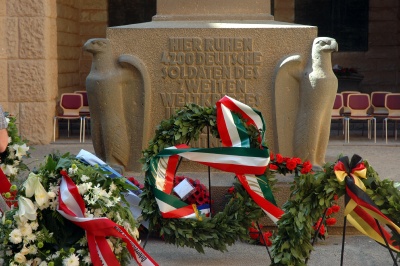
Wreaths at the foot of the obelisk
|
|
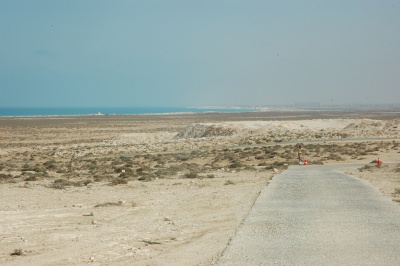
The view east towards Alexandria, the closest view the Afrika Corps had of their objective
|
|
The Italian Memorial
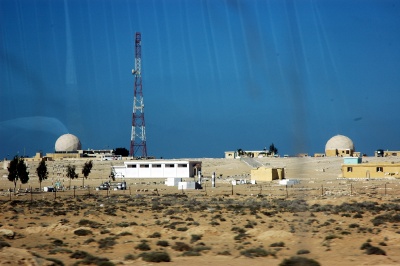
A communications centre close to the Italian memorial
|
|
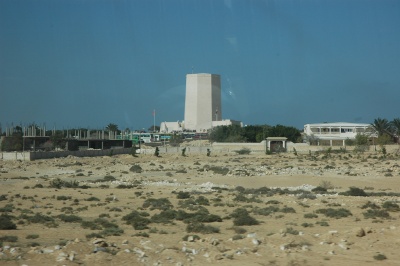
The tall tower of the Italian memorial
|
|
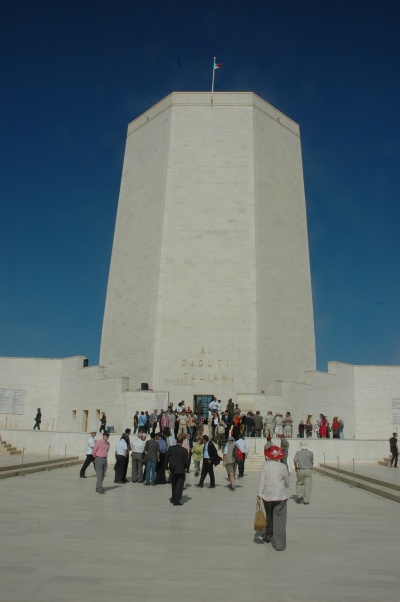
Walking up the steps to the memorial
|
|
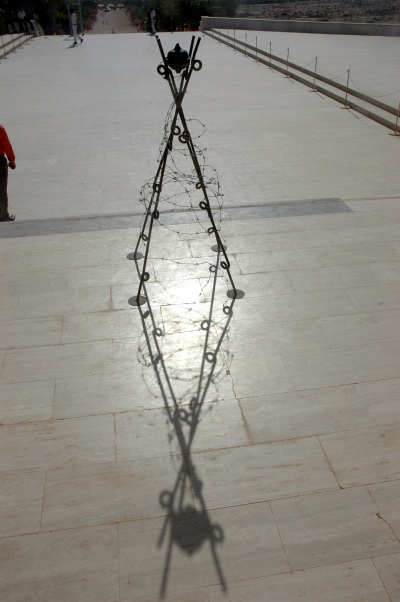
The Eternal Flame made from barbed wire at the entrance
|
|
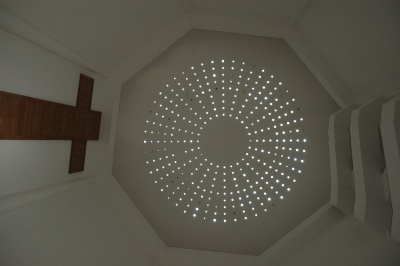
Looking up to the roof of the vaulted tower in the centre of the memorial
|
|
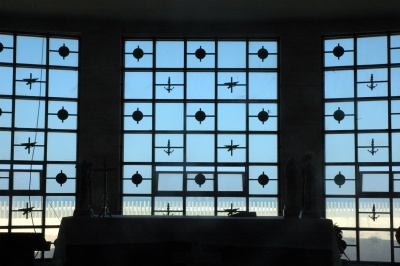
The window looking out over the Mediterranena Sea towards Italy
|
|

Lists of the Italian missing on the walls
|
|
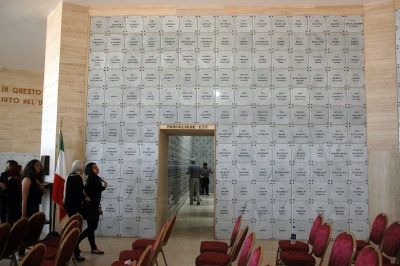
The East Wing containing the remains of many Italian men
|
|

The lines of name plates
|
|
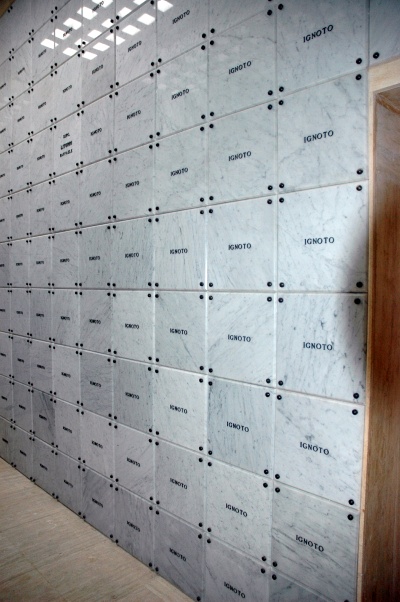
And another alcove
|
|

Many are simply "Ignoto"
|
|
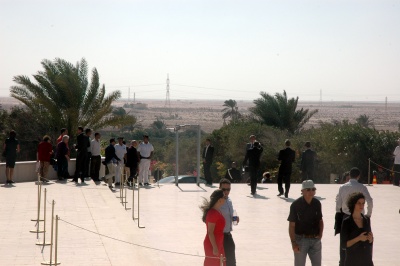
Looking south across the Alamein Line
|
|
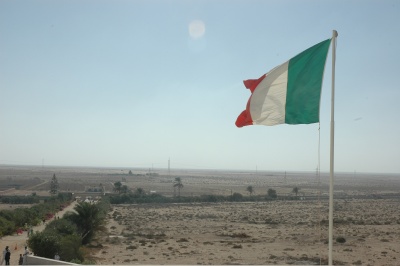
More of the Western Desert
|
|
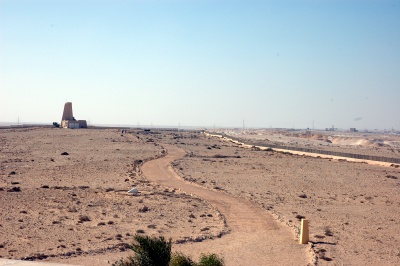
Memorial to the Italian who collected up the remains
|
|
Return to Index
Last updated: 28 January 2023

